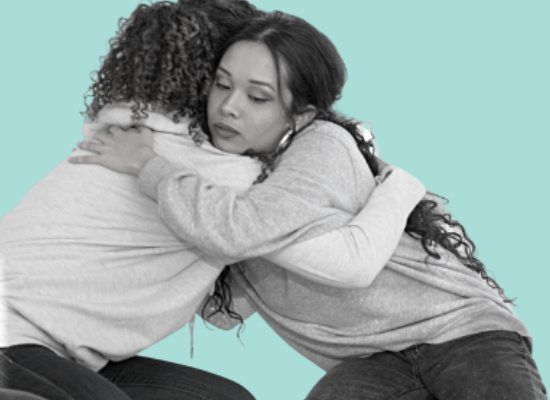
Stephanie Hepburn is a writer in New Orleans. She is the editor in chief of #CrisisTalk. You can reach her at .
Until 2008, Virginia had one of the most restrictive civil commitment clauses in the nation, tangling families in a web of exclusion and insufficient access to care. No one knows that better than journalist Pete Earley, author of “Crazy,” whose son, Kevin, was stuck in a cycle of crisis and hospitalization for eight long years.
Today, Kevin is a peer support recovery specialist, and in 2020, he earned his master’s in social work.
What facilitated Kevin’s recovery was a person-centered team who asked him about his goals and helped him achieve them. But from 2000 to 2008, Earley and his son tumbled down the mental health system’s twists and turns, marked by a series of dead-ends, with every specialist telling Kevin that his future was bleak.
It all started in 2000 when Kevin was a senior at the Pratt Institute in Brooklyn, New York. Kevin called his father, as he did every weekend, and said, “Dad, food doesn’t taste good, and I’m not eating.” He told Earley that he might have taken five homeless people to breakfast but wasn’t sure if it was a dream. Kevin hung up. His father called him back and asked what was going on.
Kevin said, “I can’t tell if I’m dreaming all the time or if I’m awake.” He was 21 years old and experiencing his first psychotic break.
Earley points out this was a critical moment for his son. In part because early intervention during the first episode of psychosis can change a person’s life trajectory for the better. Researchers have found that the longer the duration of untreated psychosis, the worse the overall outcome. Also, Kevin was open to getting help. “He wasn’t yet disillusioned or frustrated by the mental health system,” says Earley. That was to come.
Earley took his son to a psychiatrist, who met with him for only a few minutes. The doctor came out of the room and said, “If your son’s lucky, he’s using drugs, and if he’s not, he has a mental illness.” Earley was taken aback. “Who tells a father his son is lucky if he has a drug problem?” he asks. Blood work soon showed that Kevin didn’t have any drugs in his system.
This was another juncture, says Earley, that could have rendered a different outcome if done with compassion and hope. When he and his son met again with the psychiatrist, the doctor’s words were grim and despairing. He said he didn’t want to sugarcoat Kevin’s future: he had bipolar disorder, and his life would be a series of challenges. The psychiatrist listed the terrible medication side effects Kevin would experience and said the illness affected his chances of ever getting a job or married. “He’ll never get better,” said the doctor. “Forty percent of people with bipolar disorder end up using drugs and alcohol to self-medicate. Many end up homeless.”
Earley left the psychiatrist’s office feeling hopeless. Kevin turned to his father and said, “Dad, that guy’s crazy. That’s not me.”
Kevin initially took the medication the psychiatrist gave him but then stopped a couple of weeks later. There were unpleasant side effects like weight gain, and it slowed him down, but that wasn’t the reason he quit. Kevin took the medication much like how someone takes aspirin for a headache. “No one explained the disorder to him except in terms he didn’t identify with, and so he didn’t believe he had a mental illness,” says Earley.
He’s Not Dangerous Enough
Nine months later, Kevin had his second psychotic episode while back at school. He wandered New York City on foot for five days, not eating or sleeping. Kevin believed God had him on a secret mission. Fortunately, he found his way to his older brother’s home, who promptly called their father. On the car ride back to Fairfax, Virginia, where Earley lived and Kevin grew up, Kevin alternated between laughing and sobbing. “I begged him to take his medication,” says Earley. His son screamed back, “Pills are poison. Leave me alone!”
Earley made no stops on the trip from New York to Virginia, fearing his son would jump out of the car. He also didn’t know where to go. When his son asked him how he’d feel if someone he loved killed himself, Earley headed to the emergency room at Inova Fairfax Hospital.
In the emergency room, Kevin explained to the nurse that he was on a mission to save Natalie Portman. She rolled her eyes and took them to a room far from everyone else. They waited while Kevin flipped through the New Yorker, finding clues on his rescue mission in the text. After four hours, Kevin turned to his father and said, “There’s nothing wrong with me, I’m leaving.”
Desperate, Earley went into the hallway and grabbed a doctor. The doctor came into the room with his hands up as if in surrender. He asked Kevin a few questions, like who the president was and what crying over spilled milk meant. Then the doctor told Earley there was nothing he could do—the fact that Kevin waited four hours illustrated he wasn’t in imminent danger. Upon hearing this, Kevin got up and walked out the door.
“Bring him back after he tries to hurt you or someone else,” the doctor called out as Earley chased after his son.
Over the next 24-hours, he watched his son plummet further into a delusional abyss. Before sunrise the following day, Kevin left home and broke into a nearby house to take a bubble bath. “He wanted to cleanse himself because he thought God was telling him he was dirty,” says Earley.
It was Labor Day, and luckily, no one was home, but Kevin tripped the alarm, and five officers arrived on the scene with an attack dog that sunk its teeth into his upper arm. The officers arrested Kevin and took him over to a mental health center for evaluation. They also called Earley. When he arrived, a police officer pulled him aside. “Even though your son told us he has bipolar disorder, and he’s off his meds, the facility will let him go unless you tell the doctor that he threatened to hurt or kill you or someone else,” he said. Under Title 37.1 of the Code of Virginia, which the state has since replaced with new commitment criteria, a person could only be involuntarily committed if they were an imminent danger to themselves or others because of mental illness or so seriously mentally ill that they couldn’t substantially care for themselves.
The officer followed up by saying, “You don’t want him going to jail psychotic because that’s when bad things happen.”
Earley knew his son needed help, and jail wasn’t where he’d get it. “I’m not proud of it, but I went in and lied,” he says. He told the psychiatrist that his son threatened to kill him, which resulted in a 72-hour hold. After the hold, Kevin voluntarily committed himself. Relieved, Earley assumed his son would receive the care he needed while in the hospital. That’s not what happened.
We Don’t Come Out If They’re Violent
Within the first day, Earley received a call from the psychiatrist that Kevin would be released because his insurance wouldn’t pay for more hospitalization. “The insurance company told the doctor there was no reason to keep Kevin longer than 24-hours to stabilize him,” says Earley. Distraught and scared, he reached out to his friend, Mike Wallace, longtime “60 Minutes” correspondent. Wallace understood Earley’s fears; he himself suffered from clinical depression.
Wallace called the hospital and asked why they were discharging Kevin when his own doctor thought he wasn’t ready. “Suddenly, they allowed Kevin to remain in the hospital for 14 days,” says Earley. “The average length of stay is 3 days.”
Earley soon realized that his son’s inpatient hospitalization experience amounted to waking up, taking medication, and group sessions that primarily focused on medication adherence. “I’m sitting in rooms with people sharing terrible stories on how their life sucks,” Kevin told his father. “All the doctors do is tell me to take my meds, and there’s nothing to do all day.”
The medication helped him get back to reality, says Earley, but they also made him depressed.
As he navigated the Virginia system with his son, Earley learned of options other than the emergency room, like mobile crisis teams. The next time his son was in crisis, he dialed mobile crisis instead of heading to the emergency room. In the call, Earley said, “You need to come; my son is violent.” The dispatcher said, “Wait a minute, is he violent or dangerous?” Earley repeated himself.
“You’ll have to call the police,” they told him. “We don’t come out if they’re violent.”
When the police arrived, they told Kevin they were taking him to the mental health center. He agreed to get in the vehicle, but when they went to cuff him, he said, “I’ve done nothing wrong.” The officers said people couldn’t ride in a police car unless handcuffed. At that point, Kevin ran from the vehicle, and the officers shot him twice with a taser gun.
When Earley arrived at the mental health center, he found his son lying prone on his belly, his arms still handcuffed behind his back and his legs shackled. Two officers stood nearby making fun of him. Watching their treatment of his son broke Earley’s heart. “I was nearly in tears,” he says.
From there, he and Kevin’s experience in the mental health system continued to be a series of dead-ends. “That was the beginning,” says Earley, “of six years of hell and five hospitalizations.”
Kevin told his father he thought he’d soon be dead, homeless, or in jail.
Hope and Recovery
Life on a loop wore on both Earley and his son. “I’m tired of fighting with you,” he told Kevin. “I want to be your partner.” His son replied he wanted to live independently in a nearby halfway house. Earley was concerned; he knew his son wasn’t taking his medication, but he wanted to be his partner, so he drove him over to the halfway house.
That night Kevin removed his clothing—he believed doing so made him invisible—and went for a walk. A Crisis Intervention Team trained officer came across Kevin and started up a conversation with him, asking him where he was going and if he could take him to the hospital. (CIT officers are trained to use de-escalation techniques, learn about trauma and recovery, and familiarize themselves with mental health services in the community.) Kevin said okay but asked the officer not to handcuff him. “That’s when I got tasered,” he told the officer. The officer agreed, and on the way to the hospital, he put on a rap radio station because Kevin said that was the music genre he liked.
At Inova Fairfax Hospital, the officer and the emergency room doctor went back and forth. The doctor wouldn’t admit Kevin. “There’s nothing dangerous about walking around naked,” he said. “Okay, what’s your address?” asked the officer. “I’ll be sure to drop him off on your front lawn.” The doctor admitted Kevin to the hospital’s psychiatric unit.
During this inpatient hospital stay, Kevin acknowledged he had bipolar disorder. “His entire life changed the day he acknowledged his illness,” says Earley. There were multiple influences: the psychiatrist told Kevin recovery would be more difficult with each episode he experienced, his older brother was having a baby and Kevin wanted to be a part of the child’s life, and he was assigned a caseworker, Cindy Anderson, LCSW.
Anderson ran the jail diversion program in Fairfax. She saw the CIT officer’s police report and took Kevin’s case. It was the first time in eight years that Kevin received a warm handoff. Anderson promptly matched him with a psychiatrist and therapist who would listen. “It made Kevin feel like a person, not a diagnosis,” says Earley. The psychiatrist, who was also a pharmacologist, worked with Kevin to find effective medications with few side effects.
She soon said it was time for Kevin to move out of his parent’s home, and he entered a housing first program. Initially, Earley was dead set against it. “I soon realized, though, how important it was for him to have housing,” he says. “It gave him a sense of pride and independence.”
Anderson then asked Kevin what he wanted to do. “What can I do?” he asked. “I have a mental illness.” This was another pivotal moment, says Earley. For the first time, someone asked Kevin about his goals. Not long afterward, Kevin’s therapist asked if he wanted to speak about his experience with one of the therapy groups. It was transformative, says Earley. Kevin went from needing help to someone who could help others. His therapist and caseworker encouraged him to become a peer. He went through the training and became a peer specialist. Anderson then hired him.
Earley points out there’s still much work to be done regarding parity in mental health. For example, it’s been 18 years since Kevin broke into a home to take a bubble bath while experiencing a psychotic episode, yet two associated offenses remain on his record. He said diversion programs like the Criminal Mental Health Project, set up by Judge Steven Leifman in Miami-Dade County, Florida, stop people in crisis from funneling into the criminal justice system. “CIT, jail diversion, and community housing first and employment programs work,” says Earley. “I know that firsthand.”
Today, Kevin works full time as a peer specialist in Arlington. He hasn’t had a psychotic break since 2008. In 2020, he earned his master’s in social work from Virginia Commonwealth University.
“He’s an amazing success story,” says Earley. “It just goes to show that we are poor judges of people’s resilience.”









